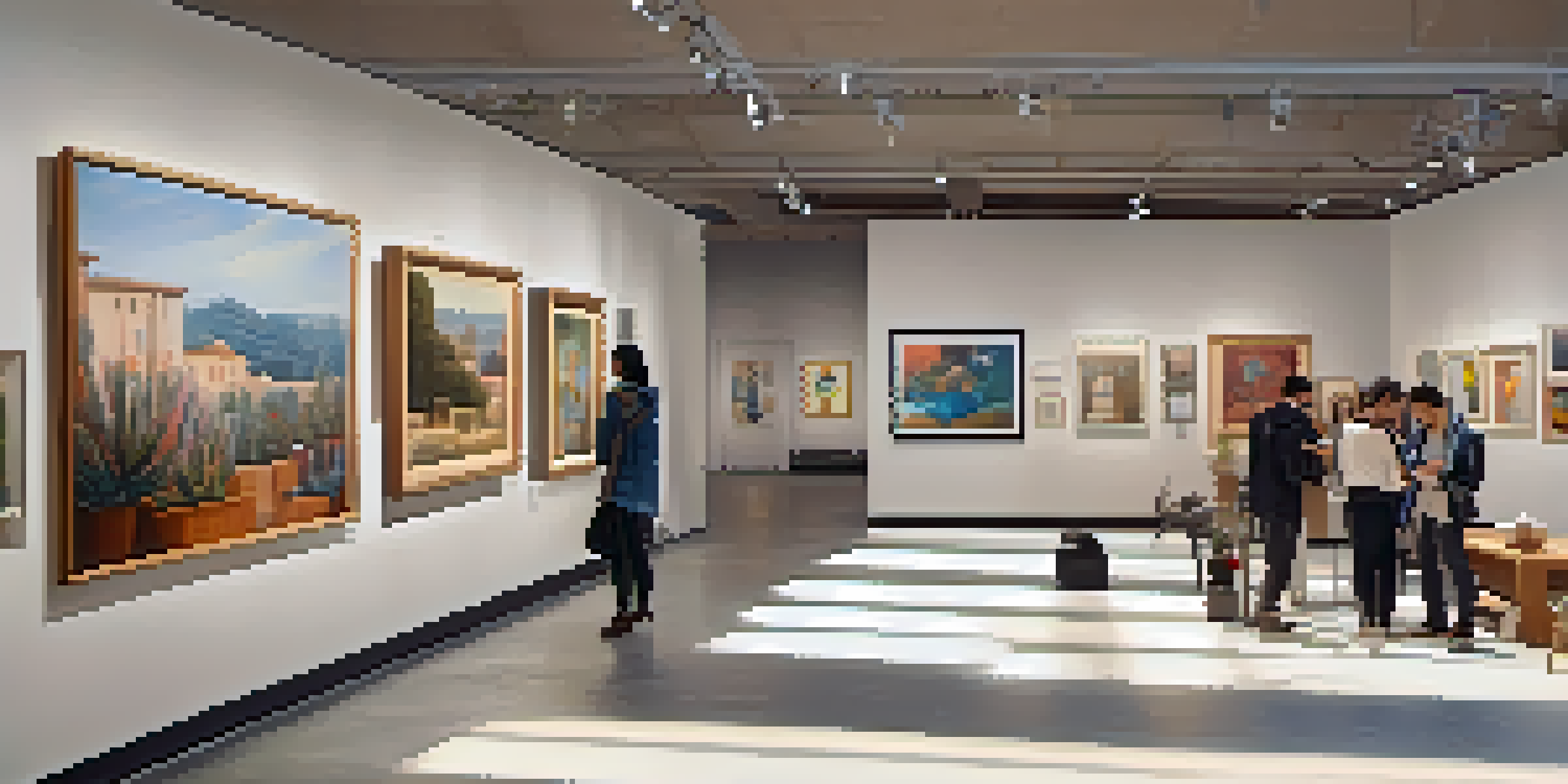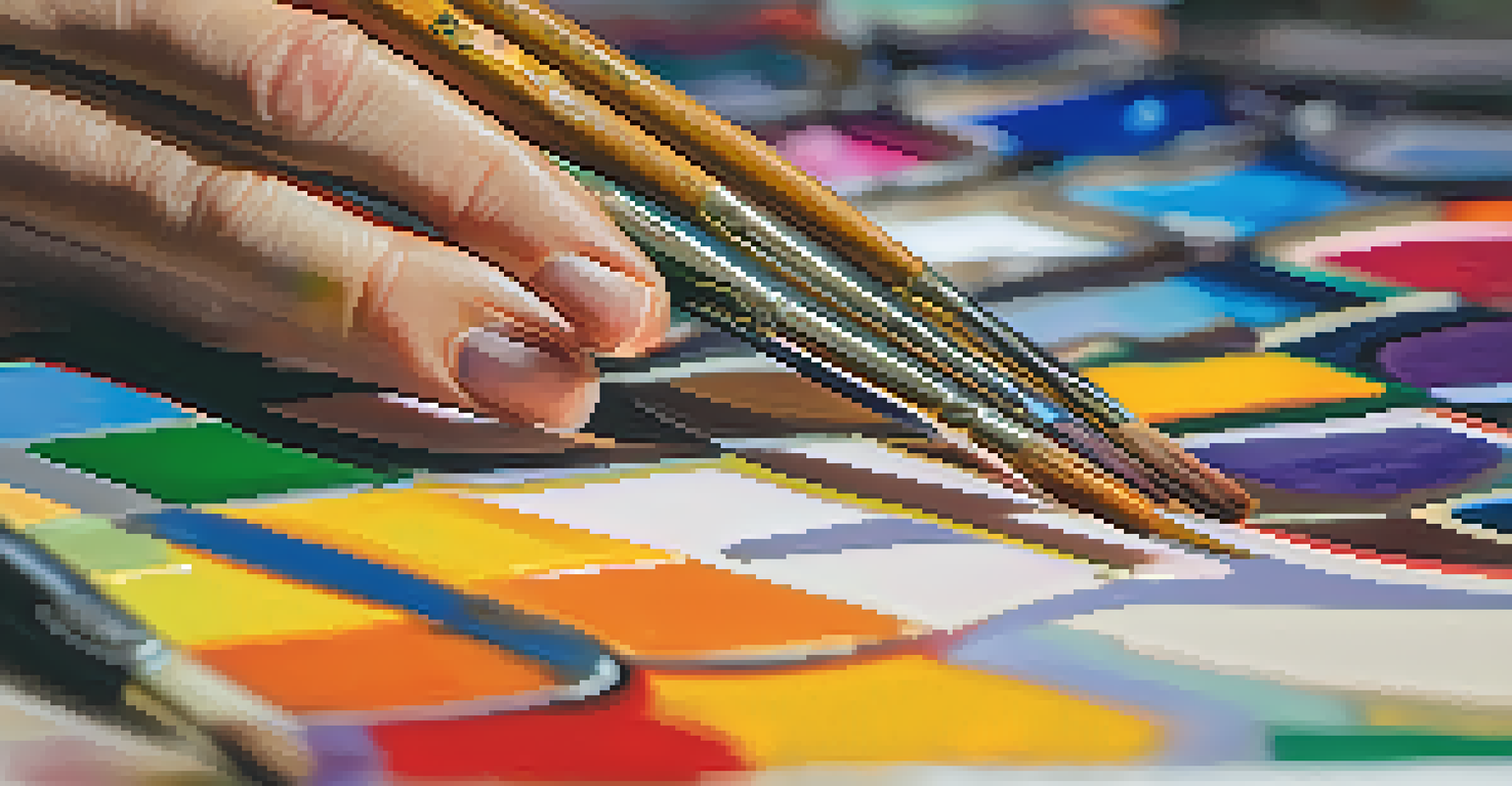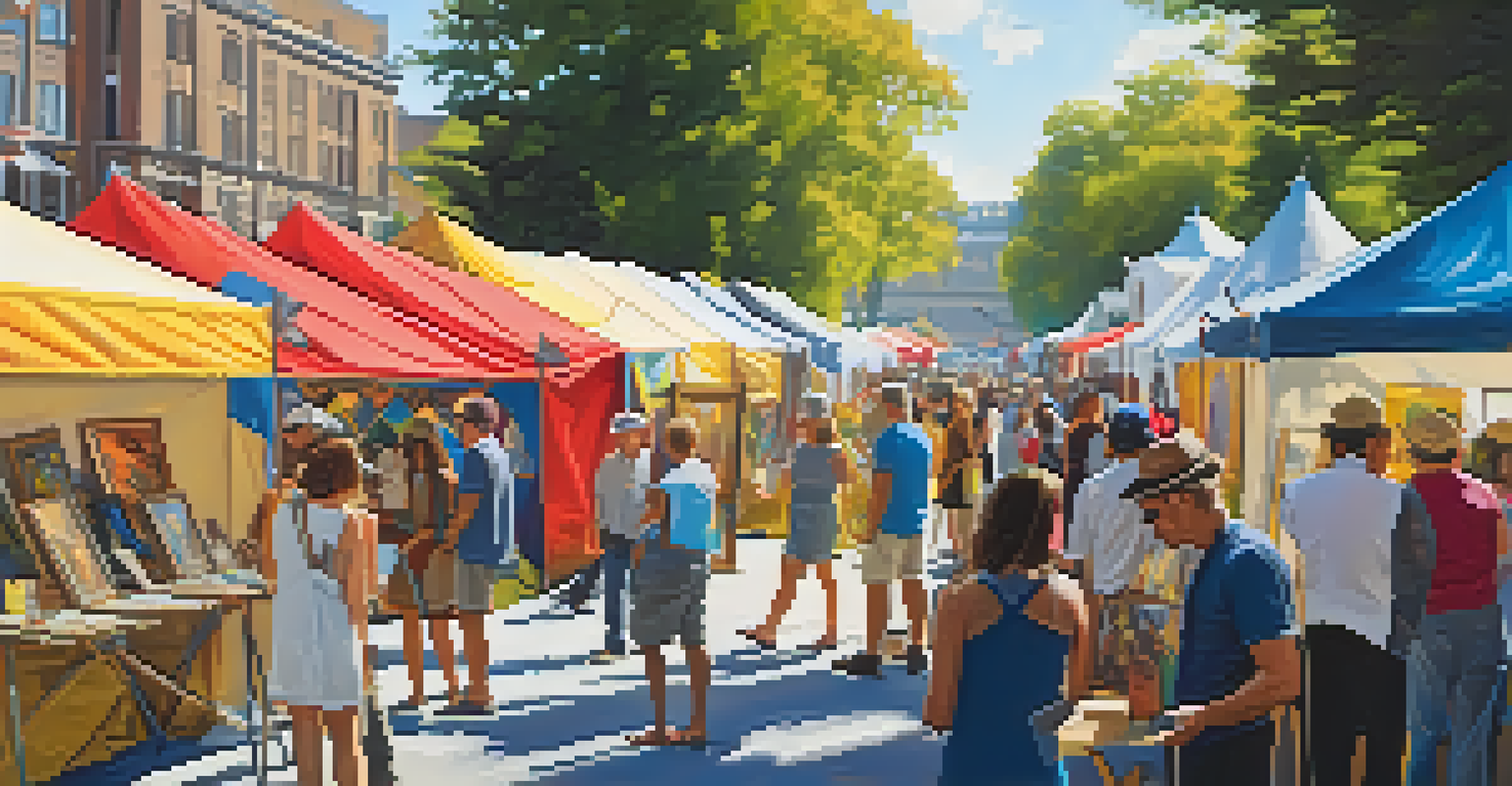How Art Critics Influence Emerging Artists and Their Careers

Understanding the Role of Art Critics in the Industry
Art critics serve as intermediaries between artists and the public, offering insights and evaluations of new works. They analyze not just the pieces themselves, but also the context in which they were created, helping to form a narrative around the artist's vision. By doing this, critics can elevate the conversation around art, influencing public perception and appreciation.
Criticism is the art of interpreting and evaluating art in a way that supports the artist's growth and the audience's understanding.
For emerging artists, having their work critiqued can be a double-edged sword. Positive reviews can propel them into the spotlight, while negative critiques might pose challenges in gaining recognition. Nevertheless, it's important for artists to understand that criticism is a part of the art world, often leading to growth and improvement.
Critics often highlight themes, techniques, and cultural relevance, which can significantly shape how an artist’s work is received. When a critic champions an artist's work, it can open doors to galleries, exhibitions, and even sales opportunities that might have otherwise been out of reach.
How Reviews Affect Emerging Artists' Public Image
The public image of an artist can be heavily influenced by the reviews they receive from critics. A glowing review can enhance an artist's credibility and attract collectors or galleries looking for fresh talent. Conversely, harsh criticism can lead potential fans to hesitate, impacting the artist’s ability to build a following.

Emerging artists often seek validation through these reviews, hoping to establish a foothold in the competitive art scene. This is where the power of a critic's voice becomes evident; they can either make or break an artist's early trajectory. For many, a single positive review can act as a catalyst for future opportunities.
Critics Shape Artist's Public Image
The reviews from art critics significantly influence how emerging artists are perceived, impacting their credibility and opportunities.
Moreover, critics shape narratives that can linger in the public consciousness. An artist's style or message may be interpreted in ways that influence how audiences view their subsequent work, making it crucial for emerging artists to consider how their art aligns with the critiques presented.
The Balance Between Critique and Support
Art criticism isn't solely about offering harsh judgments; it often includes constructive feedback that can guide emerging artists. Many critics aim to support artists by providing insights that encourage exploration and experimentation in their work. This balance is essential for fostering a creative environment where artists feel safe to innovate.
Art criticism opens up a dialogue between the artist and the public, enriching the cultural landscape.
Critics can act as mentors, helping artists navigate the complexities of the art world. By offering guidance, they can help emerging talents refine their craft and clarify their artistic vision. This mentorship aspect of critique can be invaluable, especially for those just starting their careers.
The key for emerging artists is to find critics who resonate with their work and vision. A supportive critic can provide not just critique, but also validation and encouragement, which can be instrumental in building confidence and honing their unique style.
Navigating the Digital Landscape of Art Criticism
With the rise of social media and online platforms, art criticism has evolved significantly. Emerging artists now have the opportunity to reach wider audiences without relying solely on traditional critics. Online platforms allow for immediate feedback, which can be both empowering and overwhelming.
However, the digital space also means that artists are subject to a broader range of opinions. While this democratizes art criticism, it can lead to a cacophony of voices that may or may not be informed. Emerging artists must learn to sift through this noise and focus on constructive feedback that aligns with their goals.
Critique Offers Growth Opportunities
Constructive criticism from critics can guide emerging artists in refining their craft and evolving their artistic vision.
Ultimately, the digital landscape offers a chance for emerging artists to engage directly with their audience, reshaping how criticism is received. This interaction can provide valuable insights and foster a sense of community, creating new avenues for artists to thrive.
The Influence of Art Fairs and Exhibitions
Art fairs and exhibitions provide unique platforms for emerging artists to showcase their work and attract the attention of critics. These venues are often where critics scout for new talent, making them crucial for an artist's exposure. A strong showing at an exhibition can lead to significant opportunities, including gallery representation.
Critics often attend these events not only to review artworks but also to evaluate the emerging trends in the art world. Their presence can dramatically affect the narrative surrounding an artist's work, influencing how it is perceived by collectors and the public alike. A favorable mention in a critique from such events can propel an artist's career forward.
Emerging artists can benefit greatly from understanding the dynamics of these fairs and how to leverage critic attention. By strategically engaging with critics and showcasing their best work, they can create lasting impressions that may lead to future success.
Building Relationships with Art Critics
Establishing a rapport with art critics can be tremendously beneficial for emerging artists. By engaging with critiques—be it through social media, interviews, or personal outreach—artists can foster connections that may lead to more in-depth reviews and features. This relationship-building often requires a blend of humility and confidence.
Critics appreciate artists who are open to dialogue and willing to discuss their work. This two-way communication can lead to richer critiques and stronger support for the artist's career. It’s a way for artists to not only present their work but also to share their artistic journey and intentions.
Digital Platforms Change Criticism
The rise of social media allows emerging artists to engage directly with audiences, reshaping how they receive and interpret critiques.
However, it's essential for artists to approach critics with respect for their expertise. Building a relationship should not come across as seeking validation; rather, it should be about creating an authentic connection that enriches the artistic discourse.
The Long-Term Effects of Critique on Artist Development
The influence of art critics extends beyond immediate reviews; it can shape an artist's development over the course of their career. Constructive critiques can help artists evolve, pushing them to explore new techniques and concepts. This ongoing dialogue often leads to a richer, more nuanced body of work over time.
Emerging artists who embrace criticism as a tool for growth often find themselves better equipped to navigate challenges in their careers. As they develop their styles and voices, the feedback from critics can serve as a compass, guiding them toward their artistic goals. This adaptability is crucial in an ever-changing art landscape.

Ultimately, the relationship between art critics and emerging artists can foster a vibrant art community. By embracing critique, artists can cultivate resilience and creativity, leading to a more fulfilling and productive career in the arts.